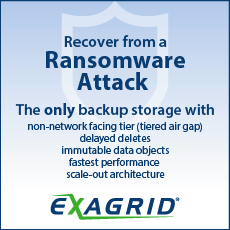Active Archive Alliance Releases Report on How Active Archives Unlock the Value of Data for Innovation and Discovery
Report highlights the power of active archives to overcome data growth challenges for the data-driven future
This is a Press Release edited by StorageNewsletter.com on November 5, 2025 at 2:00 pmThe Active Archive Alliance released a special report, “Preparing for Tomorrow’s Expanding Storage Challenge with Active Archive,” which showcases how active archives are solving data growth challenges and transforming data archives from passive repositories into active engines for innovation and discovery. It also highlights the need for new secondary storage tiers to address today’s data-driven applications. Active archives enable reliable, online and cost-effective access to data throughout its life. They are compatible with flash, disk, tape, optical, cloud and emerging technologies, as well as file, block or object storage systems.
Active archives enable reliable, online and cost-effective access to data throughout its life. They are compatible with flash, disk, tape, optical, cloud and emerging technologies, as well as file, block or object storage systems.
“Demand for enterprise storage capacity is accelerating rapidly, driven by massive AI-fueled data growth,” said Rich Gadomski, co-chairperson, Active Archive Alliance, and director of channel sales and new business development, FUJIFILM North America Corp., Data Storage Solutions. “Active archives enable smart storage optimization that offers the right balance of accessibility, performance and energy efficiency by moving data between storage tiers based on access frequency and business value.”
The report highlights applications and industries where active archives are ideal, including compliance and legal discovery, AI (AI), ML, big data analytics, video surveillance, medical research and high-performance computing (HPC) environments. It also expands on key benefits of utilizing an active archive:
- Sustainability: The growing demands of AI computing are pushing data centers and energy grids to their limits. By migrating low-activity or inactive data from HDDs to tape with an active archive, organizations can reduce carbon emissions.
- Security: An active archive strengthens the protection of archival data by incorporating advanced features such as encryption, data immutability and an air gap, along with access and authentication controls.
- Capacity and Performance: HDDs are widely used for storing massive datasets for AI training and inference, and they continue to increase capacity through innovations such as HAMR (Heat-Assisted Magnetic Recording), potentially enabling capacities to reach 50 TB per drive. At the same time, the LTO Ultrium roadmap calls for tape capacities to double with each new gen, with LTO-14 delivering up to 1,440 TB (1.44 PB) compressed per cartridge. HDDs and tape most often combine to host an active archive, offering features that boost both capacity and performance.
- Data Migration: An active archive for hybrid clouds is a modern data management solution that bridges on-premises and cloud environments, enabling seamless, long-term storage and access to archival data. Frequently accessed data can remain on premises or in high-performance cloud tiers, while less frequently accessed data is automatically moved to low-cost cloud storage.
“Organizations must modernize their storage strategies to remain competitive in an increasingly data-driven world,” said Eric Polet, co-chairperson, Active Archive Alliance, and director of product marketing, Arcitecta. “Active archives are playing a pivotal role in ensuring high-value datasets remain instantly accessible.”
The special report is a collaborative effort among the members of the Active Archive Alliance, who are bringing innovative technology solutions to the market to help meet the increased demand for effective data management.
The full report is available here: Preparing for Tomorrow’s Expanding Storage Challenge with Active Archive.














 Subscribe to our free daily newsletter
Subscribe to our free daily newsletter


